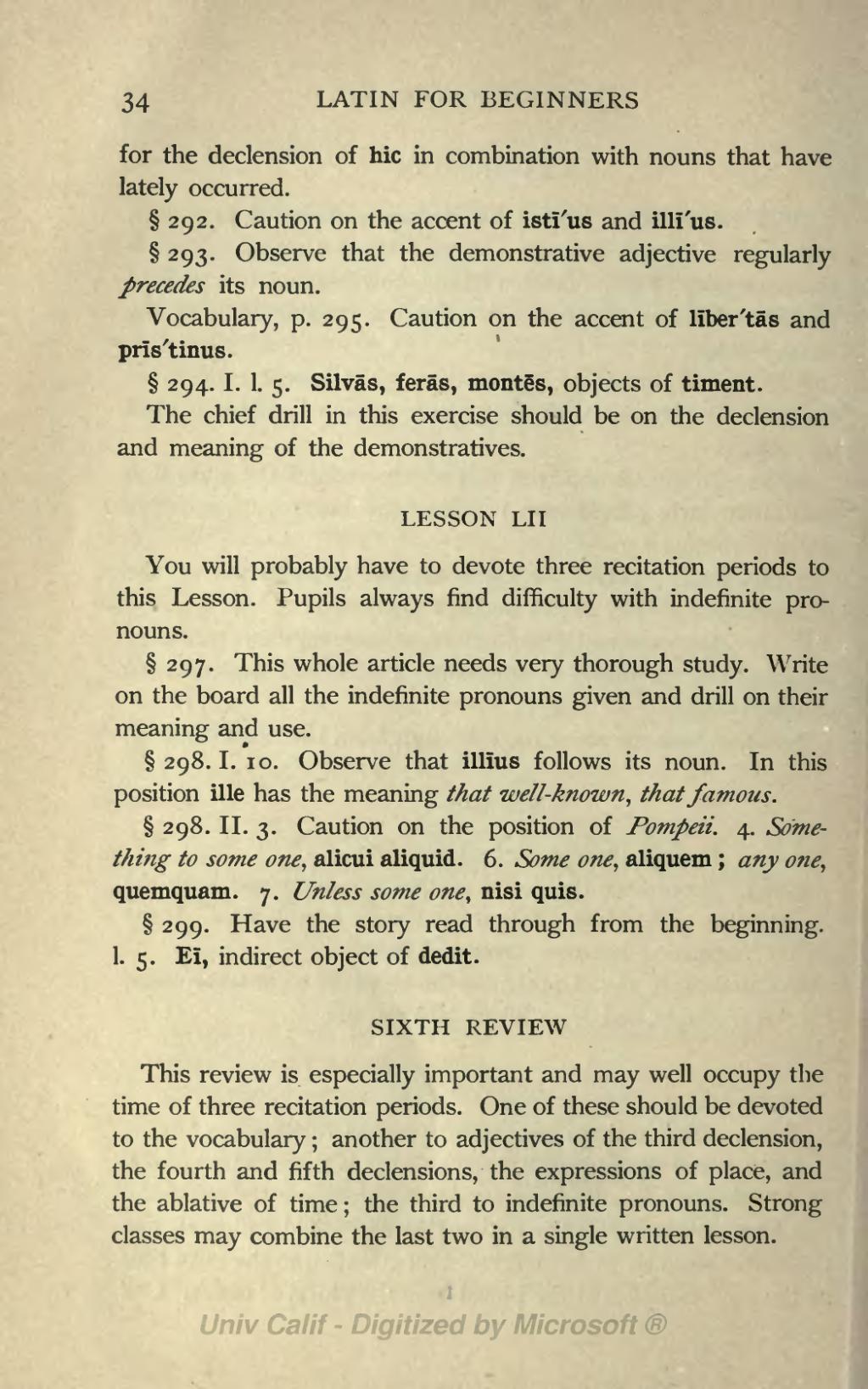for the declension of hic in combination with nouns that have lately occurred.
§ 292. Caution on the accent of istī´us and illī´us.
§ 293. Observe that the demonstrative adjective regularly precedes its noun.
Vocabulary, p. 295. Caution on the accent of līber´tās and prīs´tinus.
§ 294.I.1.5. Silvās, ferās, montēs, objects of timent.
The chief drill in this exercise should be on the declension and meaning of the demonstratives.
LESSON LII
You will probably have to devote three recitation periods to this Lesson. Pupils always find difficulty with indefinite pronouns.
§ 297. This whole article needs very thorough study. Write on the board all the indefinite pronouns given and drill on their meaning and use.
§ 298.1.10. Observe that illīus follows its noun. In this position ille has the meaning that well-known, that famous.
§ 298.II.3. Caution on the position of Pompeii. 4. Something to some one, alicui aliquid. 6. Some one, aliquem; any one, quemquam. 7. Unless some one, nisi quis.
§ 299. Have the story read through from the beginning. I.5. Eī, indirect object of dedit.
SIXTH REVIEW
This review is especially important and may well occupy the time of three recitation periods. One of these should be devoted to the vocabulary; another to adjectives of the third declension, the fourth and fifth declensions, the expressions of place, and the ablative of time; the third to indefinite pronouns. Strong classes may combine the last two in a single written lesson.

